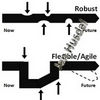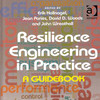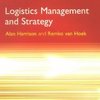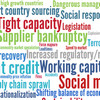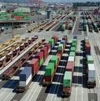 Resilience is the new buzzword in Supply Chain Management, and has slowly trickled into transportation research as well. When attending the TRB Annual Meeting in January this year, to present my paper on Supply Chain Disruptions in Sparse Transportation Networks, I came across a couple of interesting papers which I will review in my upcoming posts. First up is Structuring a definition of Resilience in the Freight Transportation System by Chilan Ta, Kelly Pitera and Anne Goodchild from the University of Washington, Seattle, WA. What I enjoyed with this paper was their holistic approach towards resilience, including all major stakeholders.
Resilience is the new buzzword in Supply Chain Management, and has slowly trickled into transportation research as well. When attending the TRB Annual Meeting in January this year, to present my paper on Supply Chain Disruptions in Sparse Transportation Networks, I came across a couple of interesting papers which I will review in my upcoming posts. First up is Structuring a definition of Resilience in the Freight Transportation System by Chilan Ta, Kelly Pitera and Anne Goodchild from the University of Washington, Seattle, WA. What I enjoyed with this paper was their holistic approach towards resilience, including all major stakeholders.
Separate concepts – bridging the gap
Ta et al. lament the lack of a thorough all-encompassing definition of resilience, citing that although resilience is a familiar concept in supply chain resilience, organizational resilience, and also in infrastructure resilience, they are still separate concepts. In their paper, they try to bridge these concepts. Some of the background research for this apper was done by Pitera in her Master’s thesis, Interpreting Resiliency: An Examination of the Use of Resiliency Strategies within the Supply Chain and Consequences for the Freight Transportation System, where she explored and evaluated resiliency efforts currently being used by importing enterprises, focusing on goods movement within the supply chain.
A concerted effort
The paper defines resilience along three dimensions:
- Physical Infrastructure
- Managing Organization
- System Users
Physical Infrastructure: The system of network of nodes and links that support freight transportation and travel (roads and road structures, railwaylines, port facilities, warehouses, intermodal yards etc.)
Managing Organization: The unit that oversees the construction, maintenance and performance of the physical infrastructure (and disseminates current performance data).
System Users: The business enterprises that move goods using the transportation infrastructure.
Resilience of the freight transportation system falls thus not only on the system users, but on the concerted effort of the physical infrastructure, the managing organization and the system users. Personally, I would like to add a 3rd dimension (or include it in the “Managing Organization”): The Regulators: The (governmental) units/agencies that regulate freight transport and oversee the regulations.
Properties of resilience
In addition to the three dimensions above, the paper also lists a number of selected properties, based on Hardold D. Foster’s book, The Ozymandias Principles: Thirty-One Strategies for Surviving Challenge, namely: Redundancy, Autonomy, Collaboration, Efficiency, Adaptability and Interdependence. These are then related the properties to each of the three dimensions and how the property contributes to freight transportation system resilience.
Example:
- Redundancy in the physical infrastructure is the aviailability of multiple routes and modes.
- Redundancy in the managing organization is multiple information sources and multiple dissemination options.
- Redundancy in the user system is multiple suppliers for parts and materials.
Conclusion
The paper develops a a definition of resilience in the context of freight transportation systems, capturing the interactions between the physical infrastructure, the managing organizations and the system users and provides an excellent starting point from which further ideas on the resilience of freight transportation systems can be developed.
Reference
Ta, C. and Pitera, K. (2009) Structuring a Definition of Resilience for the Freight Transportation System. TRB Annual Meeting, Washington, DC, 11-15 January 2009.
Author links
- unknown: Chilan Ta
- linkedin.com: Kelly Pitera
- linkedin.com: Anne Goodchild
Related
- husdal.com: Life without trucks

